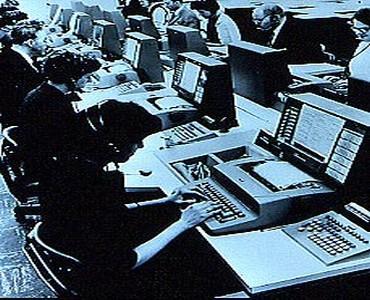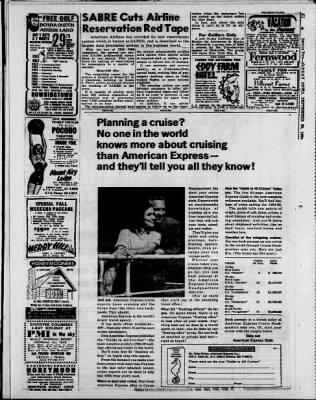Introduction
For several decades technological development and adoption have been occurring at a dramatically accelerated pace. Companies are seeking ways to enhance their competitiveness through digitalizing their process. However, not all inventions end up meeting the expectations of their creators; some are rendered obsolete even before being launched, while others only attract usage for a small duration. The Semi-Automatic Business Research Environment (SABRE) was the first to introduce e-commerce within the United States Airline Industry. Despite its early achievement, the SABRE failed to meet its long-term goals. The objective of this report brief is to explicate and contextually discuss the SABRE communication network.
SABRE Network Brief
The development of SABRE was intended to revolutionize the Airline Industry by making bookings and marketing efficient while enhancing planning and security. From the late 1940s, there was technological research intended to innovate a network that would reduce the clerical cost, manage passenger service and advertise the company. To achieve these aims, the International Business Machines (IBM) Corporation and American airlines worked together to launch (SABRE Plugge & Perry, 1961). The first SABRE system had two IBM 7090 computers based in New York City and became fully operational in 1964 (SABRE). A photograph of people working with computers and headphones at the station provides some evidence for the use of this network. The network, which cost about the US $40 million, could process up to 84 000 telephone transactions every day (Sabre). The SABRE reservation system for air travel was thus able to link up different cities using the telephone lines. Customers no longer needed to make the bookings in person but by calling the service center.
SABRE system could file records of clients and process their data electronically, after which it communicates messages on information such as waitlists and seat numbers. The SABRE network also prepared the boarding manifest, which could be stored within the hardware system. Before SABRE, teletypes and computer cards were used for handling reservations and could take a long time to provide service to the customers. Being the first of its kind, SABRE immediately became famous as airline travelers could just make a phone call and schedule a travel plan. The SABRE utilized Automatic meter reading (AMR) technology to collect, assess and transfer data to the central database system (Hopper, 1990). Thus, SABRE worked by ensuring that all the airport terminals were connected to the New York information center. The clients then had the telephone numbers of the stations where they wished to board to make reservations for their transport network.
Contextualizing SABRE Network
As earlier mentioned, the innovation of SABRE took place in the early 1960s, which was barely a decade following the Second World War that shook the political, social, and economic status of the world. This era also witnessed the Vietnam war, and many people were protesting against violence. It was also the season when the Civil Rights Movement was born. According to Riley (2021), the events of the 1960s shaped America across all facets. One of the lessons that nations learned during the wars is that airpower was paramount in securing a state. Countries were also struggling economically to recover after the destruction caused by the Second World War.
IBM partnered with American Airlines for the intellectual resource needed for the innovation of a network that would resolve some of the clerical challenges in bookings. The two companies had employees who worked in different departments and coordinated with the databases of the airline to make the necessary connection (See appendix 1). When SABRE was finally invented, it revolutionized real-time airline reservations in the 1960s by enhancing different services within the American travel industry. Most of the financial investment was made by IBM, especially during the initial stages of innovation. When SABRE became operational, the travel agencies that used the network had to pay for the service.
Particularly, the airline industry benefited from SABRE innovation given that there were many people using air for their movement in the years after the Second World War. In1963, just after SABRE debuted, computerization allowed the airline industry to process 85 000 phone calls and confirm 40 000 reservations (Hopper, 1990). The speed of its performance made it possible for American Airlines to Dwarf the demand in the industry during the 1960s. Many people needed to travel around the world as the governments tried to settle the aftermath of World War 2. Social connections between families and friends that were separated during the wars further increased the demands for travel. Given that people were busy making a call to book a ticket was more convenient for most clients. Focus on socio-economic development was important, and the use of computerization of the system in all sectors was appraised.
Immediately following its development, the American, which was at the time positioned as an airline, started marketing SABRE to various travel agents. SABRE created higher market power for airline industries that were utilizing the network. It operated as an inventory control system for different businesses as it met the technicalities required to meet the rising demand for traveling. By the early 1970s, the system was also customized to offer various services, including tracking spare parts, crew scheduling, plan generation for the aircraft, and the development of different decision support systems for the management. The American airline industry achieved a higher competitive niche as it was able to accrue at least 40% of international travel (Hopper, 1990). The result was that SABRE together with its associate systems was the control center for all functioning’s of American Airlines. As the economy of the country grew, the United States gained more political powers.
Although SABRE enhanced efficiency, there were many errors accrued by the technology at the time. SABRE was responsible for tracking hundreds of millions of data points such that if any one of the systems goes down, the result is blockage of the entire network (Wichter, 2019). For instance, the daily news from New York that was published in 1964 pointed out that SABRE had cut the airline reservation red tape (See Appendix 2). Such occurrences were inconveniencing to the passengers who would be informed that the company was experiencing some technical challenges. The reputation of the system was also affected whenever there were issues with bookings, and records of travel plans. Furthermore, with the emergence of better technologies following the internet invention SABRE eventually lost
Conclusion
Invention and innovation in the media, information and technology industry have been rampant. However, not all the networks survive or are able to solve the existing gaps in the market. IBM and American Airlines partnered in developing the SABRE system, which allowed for remote development of the system. In the 1960s SABRE enhanced the efficiency of airline travel in the United States, thus enhancing its competitive advantage. The socio-economic and political context at the time increased the demands for travel which SABRE resolved. The system increased the competitiveness of the country, boosted its economy, and enabled people to meet with each other. However, technical breakdowns and the invention of the internet and other alternative technologies to help with travel reservations SABRE was rendered obsolete.
References
Hopper, M. D. (1990). Rattling SABRE — new ways to compete on the information. Harvard Business Review.
Plugge, W. R., & Perry, M. N. (1961). American Airlines’ “Sabre” electronic reservations system. Papers were presented at the May 9-11, 1961, western joint IRE-AIEE-ACM computer conference on – IRE-AIEE-ACM ’61 (Western).
Riley, A. (Ed.). (2021). Reflecting on the 1960s at 50: A concise account of how the 1960s changed America, for better and for worse (1st ed.). Routledge.
Sabre. The Sabre story.
Wichter, Z. (2019). How one computer system tangled up several airlines. The New York Times.
Appendices
Appendix 1

Appendix 2
